The First Berries
“You’re smart. You think she might be in Watsonville? There or maybe Santa Cruz. Anyways, I’ll give it odds she ain’t further away than San Jose. She caressed her fingers tenderly. Would you like to make five hundred dollars Joe?”
East of Eden, John Steinbeck
Inspiration
The Food in Jars Mastery Challenge for June is jam! Homemade berry jam is sublime. Use the freshest, sweetest berries for the best tasting jam. Berry jam is easy too, there is no pitting or chopping. This isn’t something that can be purchased at the farmers’ market or upscale grocery store. This is your jam, something you made with local, seasonal ingredients. Six months from now this summer’s jam will be the best thing in your pantry. It will be winter, every scoop of berry jam will bring thoughts of summer. It doesn’t get any better than this.
In the Monterey Bay and Salinas Valley areas, Olallieberries are the first cane berries to ripen. Maybe that’s why they have such a cult following. Could be their intense berry flavor. Like other cane berries, Olallieberries are tart before they ripen. And when they are ripe they are easily damaged, which means a short shelf life and virtually no commercial production. This year brought good news for those of us who zealously wait for Olallieberry season. There are berries! There were no Ollalieberries in 2016, last year’s crop was decimated by a plant pathogen. Following a tradition my mom started, I went to Gizdich Ranch in Watsonville for Olallieberries. Home with twelve pounds of berries, I made pie and three batches of jam.
A few tales from the Olallieberry field. The woman who drove from Fremont to Watsonville for 30 pounds of berries asked me if I ever used Weck jars for my canning. I said I have a few, but mostly use American made Ball jars. She shared that she had over 300 Weck jars and that was all she used for her jam making. She uses a new rubber seal each time she uses a Weck jar. Her preferred labeling method is a sliver Sharpie on the top of the jar. Over heard, pick more berries! We need enough to make nine, yes, nine pies. This family has birthday celebrations with Olallie pie, cake can wait! And the husband who picked 15 pounds of Olallieberies for his wife who was out of town. All this, and we still have boysenberry, blackberry and raspberry season!
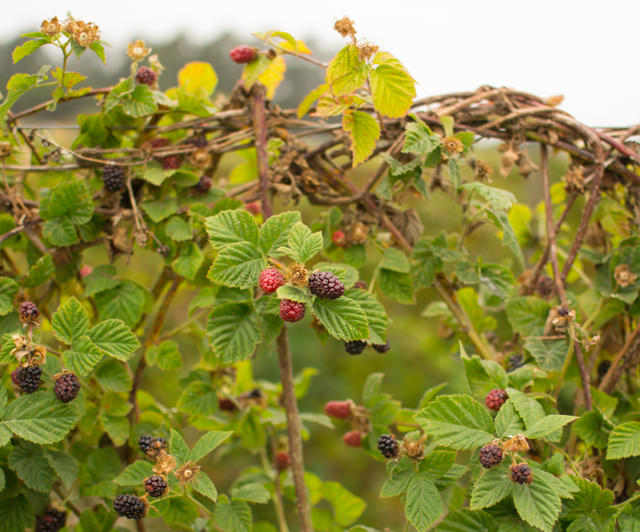
Lessons from Jam Making
- This is a mise en place project. Have everything ready to make and can the jam, including a big enough work space and a place to cool the jars.
- Always use a bigger pot than seems necessary, berry jam will foam to an uncomfortable frenzy before it calms into a manageable berry soup. Boiling fruit and sugar is very hot and can make a terrible mess.
- Spotless jar rims insure a perfect seal. Have a big stack of clean (and already stained) soft cotton towels ready. Dampen one for cleaning the rims of the jars after filling with jam. Using a clean spot on the towel wipe the rim until the damp towel no longer picks up any berry juice. Then wipe the entire rim again, just to be sure. Start with a clean, damp towel for every batch of jam.
- If you have hard water, add vinegar to both the pot with the clean jars and the pan warming the canning lids. Before storage, remove the canning rings, clean the jars with a soapy sponge and rinse. Then wipe down the jars with vinegar to remove any hard water stains.
- Just before adding the liquid pectin stirring in a tablespoon of butter, greatly reduces any lingering foam. With the Olallies, I found starting on medium heat and gently simmering until the sugar is melted and the jam is shiny greatly reduces any foam. Then turn up the heat to finish making the jam.
- Wait until the jam reaches 220° before adding the liquid pectin. Check the temperature with every batch. At this temperature the jam will be very shiny and have a sustained, boisterous boil, yet remain in the bottom of the pot. It’s almost eerie, after all the bubbling and foaming turmoil to get to that point. Depending on the sweetness of the fruit and the amount of sugar, it will be at this time that the jam can quickly scorch and burn. Watch carefully, keep stirring, taking care not to get burnt.
- Keep a record of your work, a notebook, journal or spreadsheet. In a years’ time it will be impossible to recall everything that went to making that jar of jam. A few years into jam making I started a spreadsheet to track my canning adventures. It worked very nicely, but was terribly boring. I wanted more than an accounting of jars and fruit measurements. I needed notes to remind me a year later, what worked, what didn’t, little hints I might forget. I started a canning journal.
- I prefer a thick jam that says on top of my morning toast. My jam recipe is adapted from the Ball Complete Book of Home Preserving. For more berry flavor, I use more berries and less sugar. With cane berries that don’t have any natural pectin, I use liquid pectin. It’s easy and it works wonderfully to thicken the jam. Five heaping cups of berries makes 6-7 pints of jam. When I’m finishing the last batch of the day, I scrape every bit of jam from the pan into a clear glass bowl. This way, we have fresh jam for our breakfast toast. I can’t think of a better way to begin a summer day.
| Olallieberry Jam, water bath canning, makes 6-7 pints | |
| 5C | olallieberries, blackberries, boysenberries or other cane berry |
| 2T | bottled lemon juice |
| 6C | sugar |
| 1T | unsalted butter, optional |
| 1 pouch | liquid pectin |
- Have everything ready to make the jam. Prepare the canning jars and lids. If you have hard water add vinegar to the pots with the jars and lids.
- In another very large, non-reactive pan add the berries, lemon juice and sugar. On medium heat, bring to a boil, stirring as the sugar dissolves. Once the sugar has dissolved turn the heat up to high. Stir occasionally, so the jam does not stick to the pan. The berries will foam up as they boil. As water evaporates and the temperature of the berries increase the jam will thicken somewhat, become very glossy and stay in the bottom of the pan with a sustained, boisterous boil. Most of the foam will disappear. Stir in the butter. When it has completely melted, check the temperature. At 220° stir in the liquid pectin. Keep stirring for one minute. Remove the jam from the heat.
- Remove one jar from the canner with canning tongs, poring all the water back into the canner. Fill the jar with jam, leaving 1/4” at the top of the jars. Scrupulously, clean any jam from the rim of the jar. Place a warm lid on the jar and add the canning ring. Twist until closed and the ring is tight on the jar. With tongs, place the filled jar back in the canner. Repeat with the rest of the empty jars. Arrange the jars in the canner so they are not touching and are covered with 2” of water. Place the lid on the canner and bring the pot to a boil. Once boiling, reduce the heat to maintain a vigorous, rolling boil. Process the jars for ten minutes. Leave the lid on the canner, turn off the heat and let sit for five minutes. With canning tongs remove the jars from the canner. Cover with a thick towel until the jars cool completely. Remove the rings and clean the jars with warm soapy water. Wipe down with vinegar if there any hard water stains. Label the jars and store in a cool dark place.
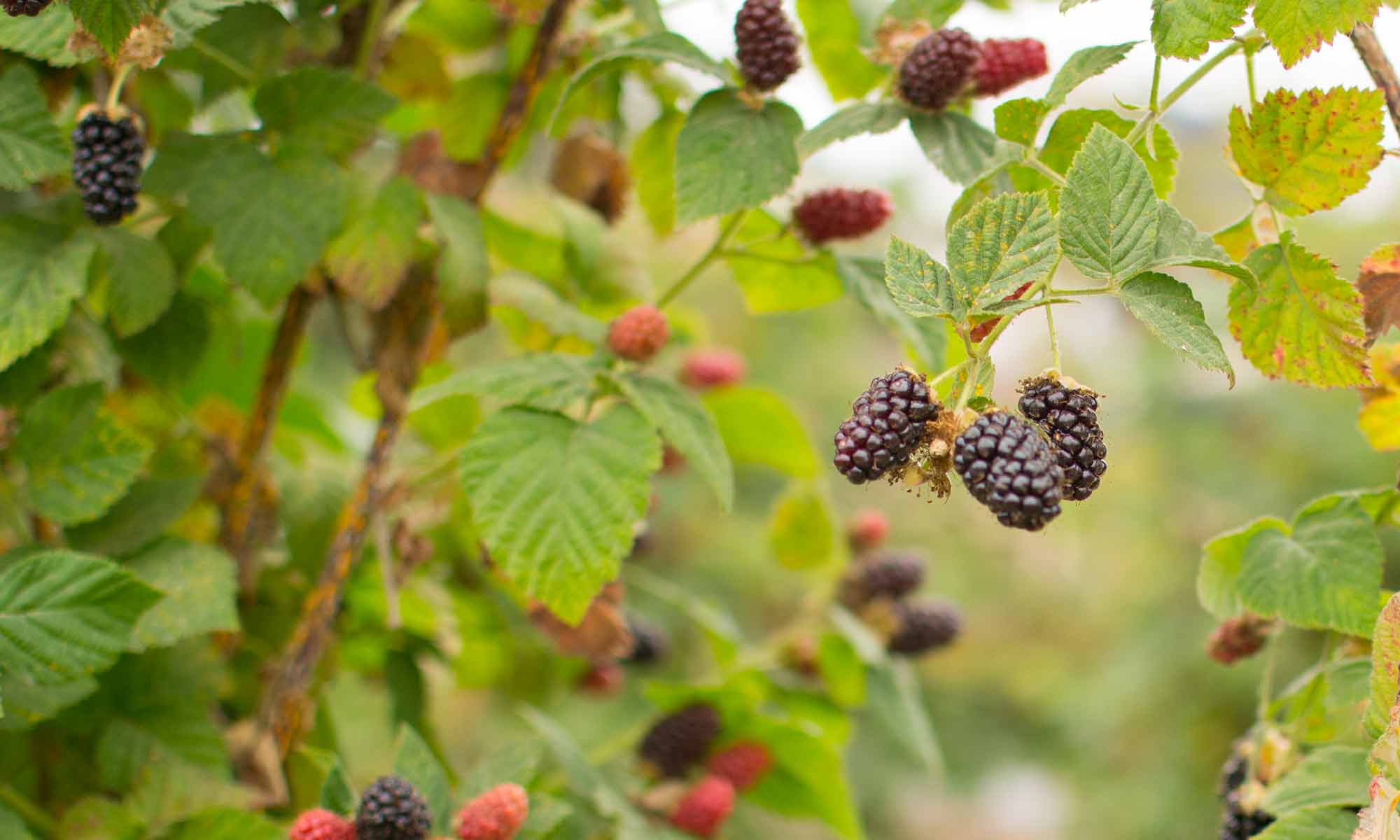
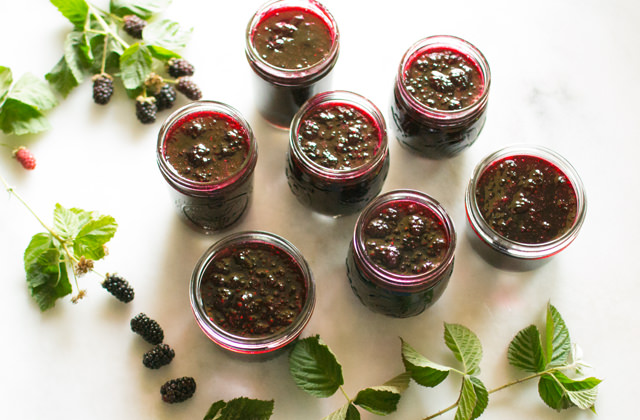
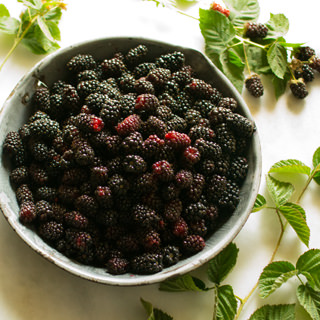
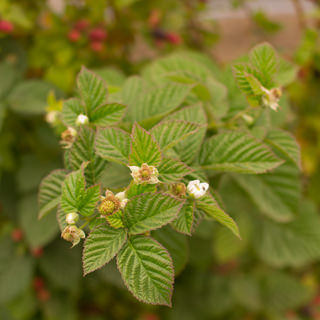
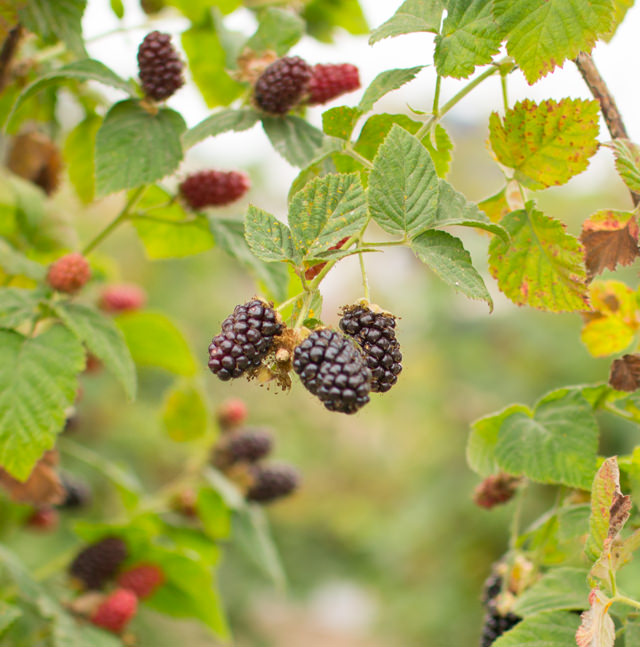
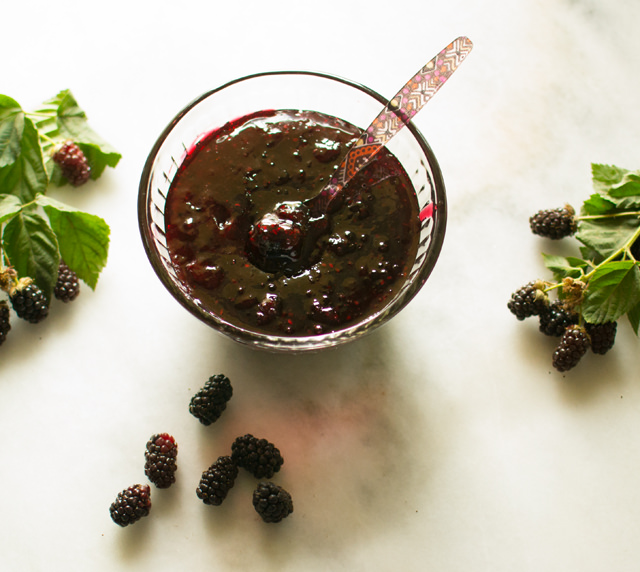
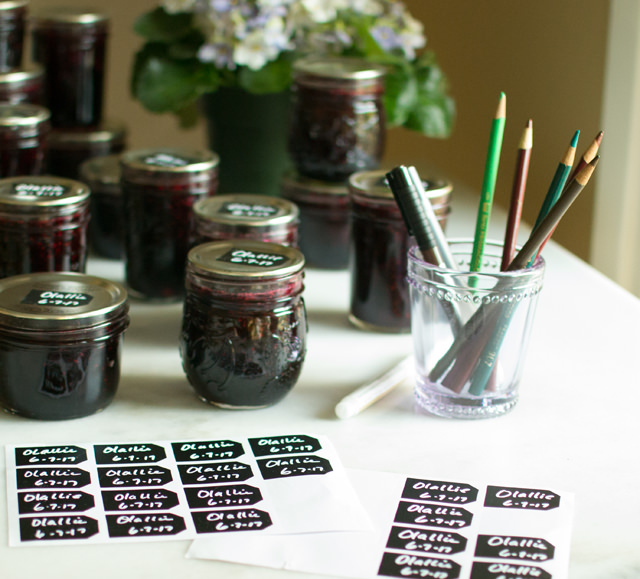
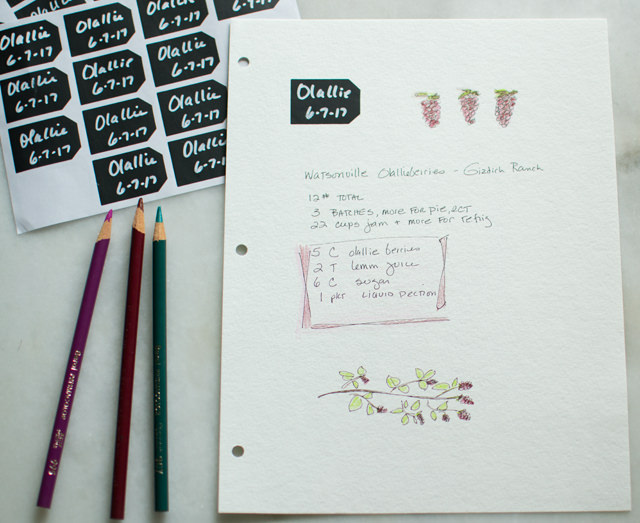
Thrilled to find your blog thanks to Food in Jars. I’m just north of you in Santa Cruz. I missed the ollalies this year but your jam recipe has me already thinking of next year.
Thank you for stopping by Jess! If you just can’t wait, frozen Olallies can be found at Gizdich Ranch year round.
I love olallieberries and I can only imagine how incredible your jam tastes – I’m dreaming of it spread on my morning toast! 🙂
Thank you Laura! Homemade jam is toasts best friend!
I wish I could taste this jam! I’ve never tasted an olallieberry, but I bet it’s wonderful. How fun to pick your own, and I love the things you overheard while picking.
Thank you Lisa! The berry month of June is the best!
My backyard has full of these wild Olallieberries. I better pick them all up and make jam with them. Yours look very pretty.
Thank you Holly! You are so very lucky to have your very own Olalliberries!
I love homemade jam and this one has the potential of becoming my favourite one. Great recipe!
Thank you Agness! Home made jam is the best!
Deb I’ve never heard of an Olallieberry and now I’m dying to get my hands on some–they look so much like marionberries, which are my all time favorite. I might have to come visit you for Olallie season next year!
Thank you Kelsie! Olallies are similar to a marion berry, they are a cross of the Logan and young berries.
Ollalieberries are new to me. I don’t think I’ve ever heard of them! Sound really interesting, though. Really fun read. Enjoy your jam!
Thank you John! For the most part, Olallieberries are a northern California thing.
I am so sorry I missed picking ollalieberris with you this year. Your jam looks amazing, this would be my husband’s favorite jam. We always used the Weck glasses in Germany. My mother only replaced the rubber bands when they were stretched or torn.
Thank you Gerlinde! Did you get Olallies? I treasure my Weck jars and use them mostly for storage. The rubber gaskets do stretch and tear when they get old. I’ve found that water bath canning wears them out quickly.
I did not get olalliberries, but I am thinking about buying some frozen ones at Gizdich ranch. I did get some blackberries at the farmer’s market and made some turnovers with them.
Berry turnovers sound divine! Yes, Gizdich Ranch has frozen berries for sale all year long.
Deb, there’s something very special about preserving jam from berries that you hand picked. I don’t think I’ve ever tasted an olallieberry, but they sound intriguing. Thanks for offering substitutions because I don’t think I’ll be getting my hands on any olallierberries in Southern California.
Thank you Mary! Some cane berries are elusive. I found Logan berries at a tiny farmers’ market, but have never seen Marion berries locally. Olallieberries are a delight if you can find them!
Deb, i am daydreaming of spreading this preserve on toast. It looks simply fab!
Thank you Denise! Homemade jam is fabulous!